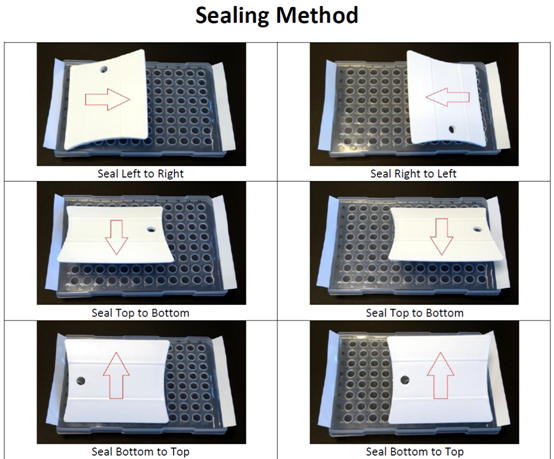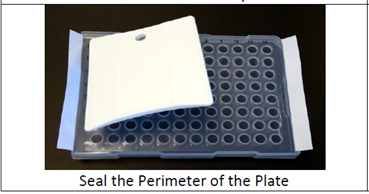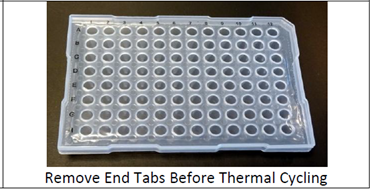What is sealing film?
The plate sealing film is a transparent plate sealing film using gel, which is widely used in experiments with 96 / 384 well plates, such as PCR, qPCR, ELISA, cell culture, long-term storage, automatic workstation processing, and almost all experiments. Its main function is to ensure that the sealing film is closely attached to the 96 / 384 well plate to prevent liquid evaporation.
Presumably, babies who often do these experiments have encountered various problems such as edge warping, evaporation, and tearing. Products that are difficult to amplify have evaporated in half! one ‘s heart is like dead ashes — utterly dissipated.
If you want to do a good job, you must first sharpen your tools. It is not easy to find out the experimental conditions, buy a PCR plate that is easy to use and invariant, and a high transparency plate sealing film. We also need to master the correct film pasting posture!
The correct film application method is as follows:
Take out a single plate sealing film or plate sealing aluminum foil from the self sealing bag, and then reseal the self sealing bag to maintain the enzyme free environment therein.
▪ Hold the sealing film or sealing aluminum foil with the backing surface facing up.
▪ Fold the end label down at the tangent of the backing.
▪ If the product used is the sealing film or aluminum foil of the single end label, remove part of the backing paper, then anchor the sealing film or aluminum foil to the board to seal it on the whole board, and then continue to remove the backing paper. This method can eliminate the curl and rollback caused by the sealing film or aluminum foil.
▪ If using a product with two end labels, peel off the center liner in a continuous and smooth manner. Slowly peel off the liner to minimize curl. Be careful not to touch the bonding surface of the film.
▪ Grasp the white parts at both ends with both hands and lower the diaphragm onto the orifice plate.
▪ Slowly scrape and seal the plate film or aluminum foil with a film pressing plate to seal it on the plate. This step should be performed at least twice horizontally and vertically. Applying sufficient force is essential to obtain good sealing. (see the schematic diagram of sealing method below):
▪ Scrape and press the platen at least twice along all outer edges of the orifice plate to ensure firm and continuous pressure.
▪ After sealing, check the flat plate to confirm whether the film / foil is tightly bonded to the plate. The sealing film or aluminum foil should not have wrinkles. If wrinkles are observed, it indicates that the plate is not properly sealed. It should also be noted that the sealing film or aluminum foil should not extend upward to the side wall of the plate. For flat plates with raised edges, this may happen because the sealing film or aluminum foil is not positioned correctly on the plate, or the joints at both ends are not torn off. Confirm the paste marks around each hole, and the entire surface of the plate (including the periphery) is sealed.
▪ After the sealing film or aluminum foil is properly sealed on the board, tear off the white joint at both ends along the tangent. (the effect is shown in the figure below):
▪ It is better to leave the sealed plate for at least 10 minutes before starting the PCR experiment, and the adhesion of the sealing film will increase with time.
▪ Transfer the plate to the PCR machine and run the PCR machine.
There are many kinds of plate sealing films of Labio, which can provide almost all kinds of plate sealing films for experimental applications for users, and can be applied to many applications including PCR, qPCR, ELISA, cell culture, long-term storage, automated workstation processing, etc.
Post time: Sep-08-2022




